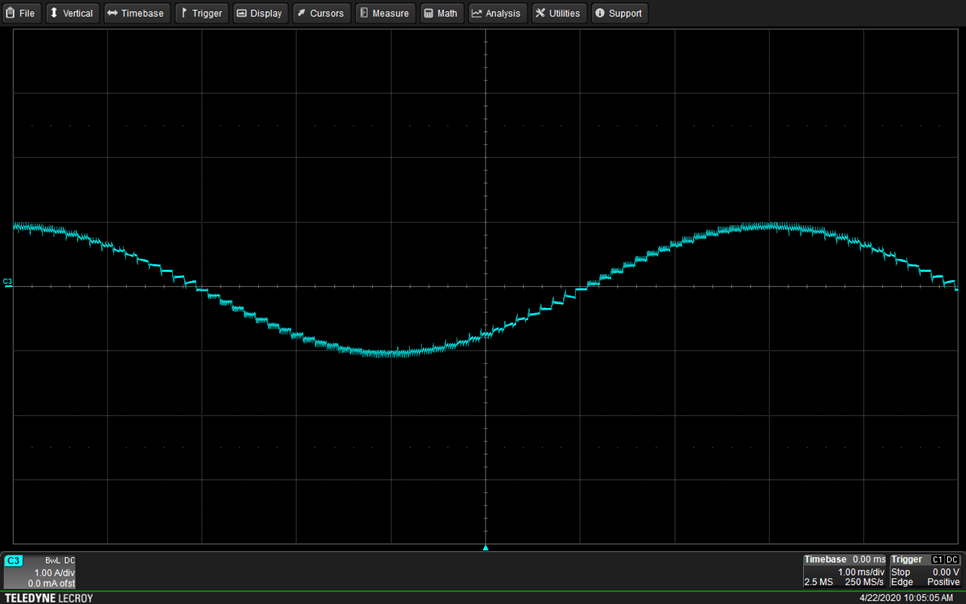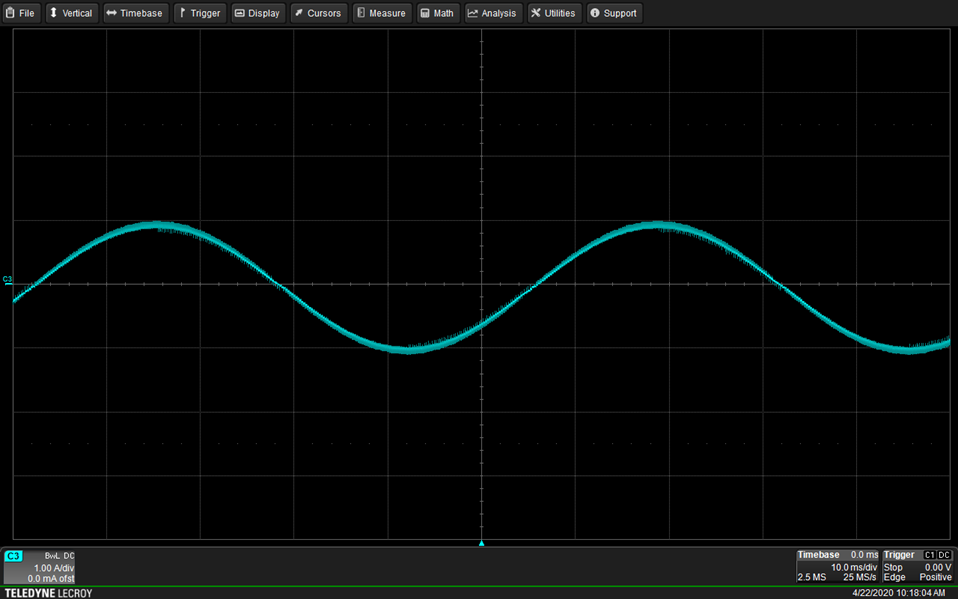SLVAES8 May 2020 DRV8424 , DRV8424E , DRV8426 , DRV8428 , DRV8428E , DRV8434 , DRV8434E , DRV8434S , DRV8436 , DRV8436E , DRV8889-Q1
3.3.3 Effects of Current Zero-cross Error
Another potential cause to audible noise can be the smoothness around the zero current crossing. Most legacy stepper motor drivers distort the current waveform around the zero-current crossing when the current changes phase, as shown in Figure 16. The reason behind this distortion is high current-sense blanking time such as 2 µs or higher - which causes the average current for the step to be significantly higher than the intended value. Another reason for distortion around zero-cross is too high OFF time, which causes the average current to be significantly lower than the intended value, as shown in Figure 17. The impact of this distortion is to create unsmooth current waveform - which leads to wobbling, vibrations and audible noise.
 Figure 16. Current Distortion Due to High Blanking Time
Figure 16. Current Distortion Due to High Blanking Time
 Figure 17. Current Distortion Due to High OFF Time
Figure 17. Current Distortion Due to High OFF Time
The blanking time for the drivers listed in Table 1 is only 1 µs, therefore there is no distortion near the zero-crossing region of the coil current. This reduces current and torque ripple and a true sine wave form is approached, resulting in a much smoother motor operation. In Figure 18 and Figure 19, the current zero crossing is shown for DRV8424 at 1/16 and 1/64 microstepping, respectively, showing smoothness around zero-cross.
 Figure 18. Smoothness of Zero-Cross at 1/16 Microstepping
Figure 18. Smoothness of Zero-Cross at 1/16 Microstepping
 Figure 19. Smoothness of Zero-Cross at 1/64 Microstepping
Figure 19. Smoothness of Zero-Cross at 1/64 Microstepping